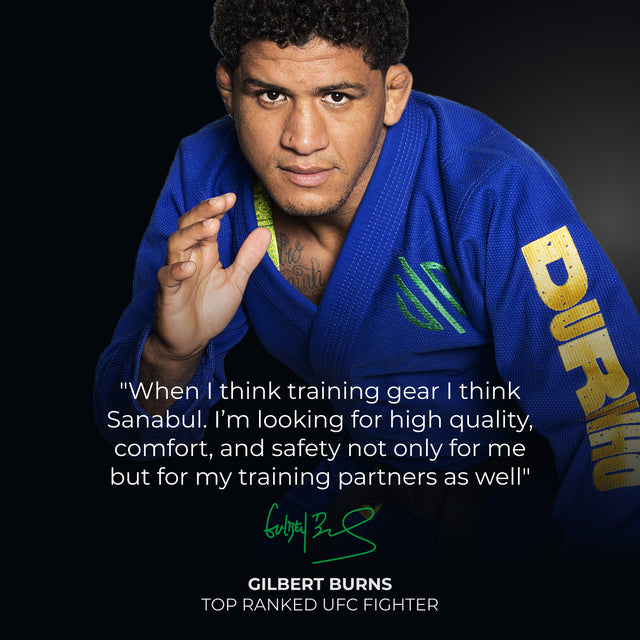At-Home Recovery Methods for Combat Sports
When it comes to sports, combat sports training is among the toughest training that you can put your body through. In striking disciplines, you are constantly dishing out and absorbing lots of powerful attacks. In grappling arts, you are manipulating the bodies of other people in a way that they are not naturally designed to be twisted, pulled, and bent, while defending these same things from being done to you. Consistent training can easily bring your body to its physical limits.
Since training is extremely hard on your body, recovery is essential to getting the most out of practices and performing at your best. Not everyone has the funds or the living space for a cold plunge tub, sauna, or a hyperbaric chamber. This article will explore different ways to keep your body intact to sustain consistent hard training, with affordable methods you can do in your own home.
Disclaimer: This article offers suggestions and not professional medical advice. Please see a medical professional or healthcare provider for a personalized diagnosis and treatment plan.
Ice
Ice can be a great way to reduce swelling and inflammation on your body. Good for numbing pain, ice can also help to soothe your sore muscles and make your recovery process more comfortable. If you think you may have an injury, you should ice the area in question before seeing a medical professional. With high amounts of swelling and inflammation, it may be tricky for them to understand what may actually be going on, as these two factors may exaggerate your short term damage and hide the true longer-term problem. Once the swelling and inflammation go down and your body is as close to “normal” as possible, then you should go to them for a diagnosis. Ice is fairly easy to acquire (either by making your own or buying bags/ice packs at a store), which makes it one of the most convenient recovery options.
It is important to note that there is conflicting information regarding ice. Some sources say that by icing your body, you are delaying your body’s natural healing process. This natural healing process starts with inflammation and swelling (result of inflammation) and when you ice, your blood vessels constrict and less blood/fluid is delivered to the affected area - reducing swelling and inflammation. After your body returns to normal temperature, inflammation will still set in (starting the tissue healing process), meaning ice only delayed the recovery process. However, it is generally agreed upon that ice for recent acute injuries can help.
At home, you can treat your body with ice through:
Ice packs (or Frozen gel packs)
Ice bags
Cold baths/showers
Heat
Just as cold therapy is applying something cold to an affected area of your body, heat therapy is when something of warm to hot temperature is applied. When heat is applied to a certain area, the circulation improves and blood flow increases. As a result, muscles can be soothed and loosened and the pain reduced. As your muscles relax and become looser with heat therapy, range of motion can be improved, which can allow you to return to 100% as soon as possible.
At home, you can treat your body with heat through:
Heating pads (or warm gel packs)
Warm towels
Warm or hot baths/showers
Epsom salt baths
Foam Rolling / Self Massaging
Foam rolling is the process of rolling your body on top of a roller. It has a hard core, to maintain structure, but softer foam on top to be comfortable enough to roll your body back and forth on. Putting the foam roller on the ground and your body on top, gravity does all the work as your weight will naturally push down into the roller.
Foam rolling eases muscle pain and can be a great way to keep your muscles loose. By relaxing this tension in your muscles, blood flow can be improved to these areas. Blood carries oxygen and nutrients to muscle tissue, which is essential for their recovery and repair (also why heat therapy has been so successful for many). Waste products that accumulate during exercise can also be flushed out of the muscles during the rolling process and improve your overall level of comfort during rest. The combination of improving circulation and reducing the amount of waste products that buildup in muscles can help you to return to a full range of motion very quickly.
Massaging yourself is another option that has the same benefits as foam rolling. The only difference is the delivery: one uses the foam roller, while the other method only requires you. Using your thumbs and fingers, apply pressure to improve circulation in different areas of your body. Run your fingers up and down your limbs, back and father, and in circular motions to loosen your muscles and alleviate any pain you feel. To lessen the discomfort you may feel during your self-massage, follow your own body. Trace your muscles and apply gentle to heavy pressure along them, depending on how stiff they feel. You can do this anywhere and no additional equipment is needed.
Proper nutrition
Eating well is key to performing and recovering well. Eating not only fuels you with energy, but it also helps with your muscle repair. Specifically, eating sufficient carbohydrates will ensure that you have enough energy to train properly and can help you to avoid injuries that could have otherwise been prevented if you weren’t drained due to malnutrition or malnourishment. When it comes to recovery after training, make sure you eat enough protein. Protein is vital for muscle repair. During training or any form of exercise, microtears in the muscle will form due to the stress they endure. Amino acids are required for these tears to heal and create new muscle to be strong enough to handle more stress (aka how muscle is built) and protein is packed with essential amino acids. In addition nutrients found in foods and fruits help with overall maintenance of the body. Consuming adequate nutrients, like vitamins and minerals, can help to ensure our bodies remain strong and our internal systems (respiratory, digestive, circulatory, nervous, etc) functioning well. In addition, consuming an adequate amount of antioxidants (great source: fruits) can help prevent various diseases, cell damage, and more. Make sure you have a well balanced diet and stay hydrated throughout the day, to ensure you are performing at your best.
Sleep
Make sure you get enough sleep. Lack of sleep has been associated with decreases in endurance, strength, reaction time, overall cognitive function, and more. Sleeping is needed to mentally reset from the day we just had, as well as to prepare for the next day we are about to have. Physically, sleep helps to restore and repair our bodies. During rest, we release hormones that help to repair cells throughout our body and keep our overall health in good condition (immune, cardiovascular, respiratory, digestive, circulatory, and other systems are all affected by the amount of sleep we get).
Aim for 7-9 hours each night and take naps during the day if needed. Naps may negatively affect the way you sleep at night, so listen to your body and decide what is best for you.
Rest Days
Combat sports athletes should definitely take rest days. Training is fun and very important if you plan to compete, but your body needs a break to recover properly and be able to handle the stress it has and will endure.
Depending on your schedule, take 1-2 rest days every week. During this time, you can engage in light-intensity activities with minimal impact. Walking, biking, swimming, and anything done at light paces can allow you to stay active, while not putting too much stress on your body when it is meant to be recovering.
Another way to make the most of your recovery days is to learn. Watch fights, technique videos, fighter breakdowns, performance analysis, or anything that you can that can help you in your discipline. Learn more about nutrition, how you can get more sleep – again, anything that can help you is worth learning when you have the time. Taking recovery days can allow you to make this free time in an already packed schedule.
Thank you for reading - we hope these at-home recovery methods can help you!
Here are some articles with basic information on the recovery methods we mentioned. Feel free to used these as a starting point for any additional research you may do, to learn more about these topics:
Ice vs Heat
https://www.goodrx.com/well-being/movement-exercise/sore-muscles-when-to-ice-vs-heat
Is cold therapy still effective?
https://www.ncbi.nlm.nih.gov/pmc/articles/PMC8173427/
Cold therapy controversy
https://www.menshealth.com/fitness/a29710918/icing-sore-muscles/
Benefits of heat therapy
https://www.verywellfit.com/the-benefits-of-heat-therapy-for-injuries-4783461
Heat vs cold therapy
https://www.healthline.com/health/chronic-pain/treating-pain-with-heat-and-cold#heat-therapy
Foam rolling
https://www.healthline.com/health/foam-roller-benefits#flexibility
Benefits of Foam Rolling
https://www.themanual.com/fitness/benefits-of-foam-rolling/
Importance of protein for recovery
https://www.verywellfit.com/why-protein-is-important-for-workout-recovery-6751956
Sleep for athletes
https://www.ncbi.nlm.nih.gov/pmc/articles/PMC6988893/





0 Comments
There are no comments for this article. Be the first one to leave a message!